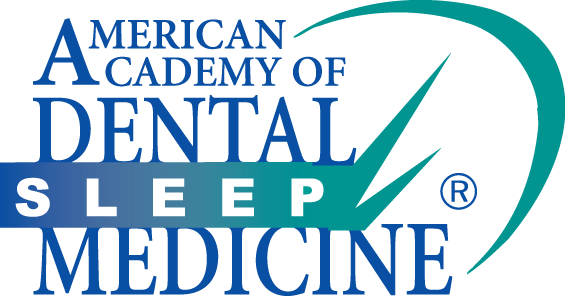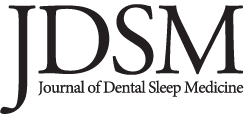
Letter 1, Issue 12.3
The Many Faces of Equal Effectiveness When Comparing CPAP and MAD Therapy for OSA
http://dx.doi.org/10.15331/jdsm.7404
Olivier M. Vanderveken, MD, PhD1,2
1Full Professor and Chair, Vice-Dean, Faculty of Medicine and Health Sciences, University of Antwerp, Antwerp, Belgium; 2Department of ENT, Head and Neck Surgery, Antwerp University Hospital, Edegem, Belgium
In 1965, Gastaut et al. provided the first comprehensive account of obstructive sleep apnea syndrome (OSAS), describing polysomnography in obese hypersomnolent patients with frequent nocturnal apneas.1 In 1978, Remmers et al. reported on a nocturnal cyclic ventilatory pattern that consisted of a series of regular inspiratory efforts against an occluded airway alternating with a period of regular breathing with the pharynx, and not the larynx, being the site of upper airway occlusion during sleep.2 The main pathophysiological feature of OSAS is indeed obstruction in the collapsible segment of the pharynx during sleep leading to nocturnal hypoxemia and sleep fragmentation.3 OSAS is associated with cardiovascular co-morbidities, and overall increased cardiovascular mortality, as well as metabolic dysfunction.4 The prevalence of this chronic disease is remarkably high with prevalence of moderate-to-severe OSAS reported to be as high than 23% in women and 50% in men, respectively.5 It remains to be established whether treating OSAS can fully reverse its chronic consequences.4
Apart from tracheostomy, that has the potential to bypass the collapsible segment but is highly invasive, continuous positive airway pressure (CPAP), first described in 1981 by Sullivan, is regarded as the standard treatment for OSAS.6,7 The adherence to CPAP, however, is highly variable and relatively low, with reported CPAP termination rates ranging from 12.4% at 3 months to 47.7% at 3 years, respectively.8,9 When combining the results of the Sleep Apnea Cardiovascular Endpoints (SAVE) study and the 47.7% termination rate in the French nationwide CPAP database, it could be speculated that the true long-term clinical effectiveness of CPAP is only 20%.9-11
The first-line non-surgical alternative for CPAP is treatment of OSAS with custom-made, titratable mandibular advancement devices (MAD).12-14 There is strong evidence demonstrating MAD treatment improves OSAS in most subjects, including patients with more severe disease, while generally being well tolerated.12 Phillips et al. reported on the health outcomes of optimal MAD and CPAP treatment in patients with moderate-to-severe OSAS being similar and suggested that these results could be explained by greater efficacy of CPAP being offset by inferior compliance relative to MAD, resulting in similar effectiveness.15 Therefore, comparable effectiveness of MAD and CPAP could be attributed to higher efficacy in terms of reducing apneic events with CPAP being counteracted by greater treatment adherence with MAD.12
The CHOICE study was a multicenter, double-randomized cross-over trial offering CPAP and MAD to all participants.16 At one month follow-up, the average adherence per night with MAS was significantly higher than with CPAP. Interestingly, in the observational phase of the trial, most participants utilized both CPAP and MAS interchangeably supporting the necessity for having access to both CPAP and MAD for improved long-term management of OSAS.16 Once again, the CHOICE study results illustrate that multimodality treatment can contribute to personalized medicine approach for OSAS, and that combination therapy should not be a taboo.16,17
In a recent noninferiority trial 220 participants with moderate-to-severe OSAS were randomized to either MAD or CPAP with a primary outcome being the difference between the 24-hour mean arterial blood pressure (BP) at baseline and 6 months.18 Based on the results the authors concluded that MAD was noninferior to CPAP for reducing the primary outcome in OSAS patients with hypertension and increased cardiovascular risk.18
The results of the prospective clinical trial called “the First Line Obstructive Sleep Apnea Treatment (FLOSAT)” evaluating the clinical effectiveness of MAD therapy as first-line treatment option compared to second-line CPAP therapy in the same patients’ cohort suggest that MAD therapy demonstrates good efficacy and high adherence resulting in non-inferior effectiveness compared to CPAP.19 FLOSAT includes 94 patients with moderate-to-severe OSA that completed all study visits and underwent three months of MAD therapy followed by a two-weeks wash-out period and three months of CPAP therapy. Most of the patients preferred MAD.19
In conclusion, we could argue that the comparison of effectiveness between CPAP and MAD for the treatment of OSAS has many dimensions and faces. In recent clinical trials, MAD therapy demonstrates good efficacy and high adherence resulting in non-inferior effectiveness compared to CPAP. In addition, OSAS therapy should be tailored to individual patient needs. The interchangeable use of therapies that led to a similar improvement and comparable clinical effectiveness on patient-centered outcomes while increasing overall adherence to treatment is highly important for future approaches.
CITATION
Vanderveken OM. The Many faces of equal effectiveness when comparing CPAP and MAD therapy for OSA. J Dent Sleep Med. 2025;12(3).REFERENCES
- Gastaut H, Tassinari CA, Duron B. Etude polygraphique des manifestations épisodiques (hypniques et respiratoires), diurnes et nocturnes, du syndrome de Pickwick [Polygraphic study of diurnal and nocturnal (hypnic and respiratory) episodal manifestations of Pickwick syndrome]. Rev Neurol (Paris). 1965;112(6):568-79.
- Remmers JE, deGroot WJ, Sauerland EK, Anch AM. Pathogenesis of upper airway occlusion during sleep. J Appl Physiol Respir Environ Exerc Physiol. 1978;44(6):931-8.
- Smith PL, Wise RA, Gold AR, Schwartz AR, Permutt S. Upper airway pressure-flow relationships in obstructive sleep apnea. J Appl Physiol (1985). 1988;64(2):789-95.
- Lévy P, Kohler M, McNicholas WT, et al. Obstructive sleep apnoea syndrome. Nat Rev Dis Primers. 2015 ;1:15015.
- Heinzer R, Vat S, Marques-Vidal P, et al. Prevalence of sleep-disordered breathing in the general population: the HypnoLaus study. Lancet Respir Med. 2015;3(4):310-8.
- Guilleminault C, Simmons FB, Motta J, Cummiskey J, Rosekind M, Schroeder JS, Dement WC. Obstructive sleep apnea syndrome and tracheostomy. Long-term follow-up experience. Arch Intern Med. 1981;141(8):985-8.
- Sullivan CE, Issa FG, Berthon-Jones M, Eves L. Reversal of obstructive sleep apnoea by continuous positive airway pressure applied through the nares. Lancet. 1981;1(8225):862-5.
- Buyse B, Bruyneel M, Verbraecken J, Testelmans D. High adherence to continuous positive airway pressure (CPAP) in patients with obstructive sleep apnea (OSA) in Belgium: a narrative review. Acta Clin Belg. 2022;77(3):710-720.
- Pépin JL, Bailly S, Rinder P, et al. CPAP therapy termination rates by OSA phenotype: A French nationwide database analysis. J Clin Med. 2021;10(5):936.
- McEvoy RD, Antic NA, Heeley E, et al. CPAP for Prevention of Cardiovascular Events in Obstructive Sleep Apnea. N Engl J Med. 2016;375(10):919-31.
- Vanderveken OM, Dieltjens M, Wouters K, De Backer WA, Van de Heyning PH, Braem MJ. Objective measurement of compliance during oral appliance therapy for sleep-disordered breathing. Thorax. 2013;68(1):91-6.
- Sutherland K, Vanderveken OM, Tsuda H, Marklund M, Gagnadoux F, Kushida CA, Cistulli PA. Oral appliance treatment for obstructive sleep apnea: an update. J Clin Sleep Med. 2014;10(2):215-27.
- Ramar K, Dort LC, Katz SG, Lettieri CJ, Harrod CG, Thomas SM, Chervin RD. Clinical practice guideline for the treatment of obstructive sleep apnea and snoring with oral appliance therapy: an update for 2015. J Dent Sleep Med. 2015;2(3):71–125.
- Vanderveken OM, Devolder A, Marklund M, et al. Comparison of a custom-made and a thermoplastic oral appliance for the treatment of mild sleep apnea. Am J Respir Crit Care Med. 2008;178(2):197-202.
- Phillips CL, Grunstein RR, Darendeliler MA, et al. Health outcomes of continuous positive airway pressure versus oral appliance treatment for obstructive sleep apnea: a randomized controlled trial. Am J Respir Crit Care Med. 2013;187(8):879-87.
- Hamoda MM, Huynh N, Ayas NT, et al. Continuous positive airway pressure and mandibular advancement splints: the CHOICE multicentre, open-label randomised clinical trial. Eur Respir J. 2025;65(4):2401100.
- Vanderveken OM. Combination therapy for obstructive sleep apnea in order to achieve complete disease alleviation: from taboo to new standard of care. J Dent Sleep Med. 2015;2(1):7–8.
- Ou YH, Colpani JT, Cheong CS, et al. Mandibular advancement vs CPAP for blood pressure reduction in patients with obstructive sleep apnea. J Am Coll Cardiol. 2024 May 7;83(18):1760-1772.
- Dieltjens M, Op de Beeck S, Engelen S, et al. Therapeutic efficacy, expressed by decrease in apnea/hypopnea index and sleep apnea specific hypoxic burden (SASHB), of precision mandibular advancement device (MAD) and continuous positive airway pressure (CPA) therapy, evaluated in the same patient cohort. J Dent Sleep Med. 2025; 12(2):7–8.
SUBMISSION AND CORRESPONDENCE INFORMATION
Accepted for publication July 1, 2025.
Address correspondence to: Olivier M. Vanderveken, MD, PhD; Email: olivier.vanderveken@uantwerp.be.
